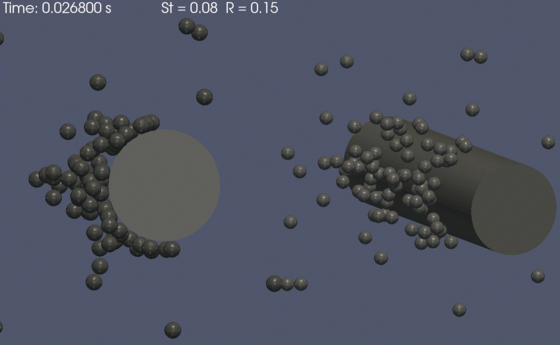Formation, rearrangement and reentrainment of inert-reactive particle structures in flow around a cylindrical collector
A mixture of reactive and inert components in a deposited particle structure can be found in several industrial applications. An example is the formation of soot (reactive) and ash (inert) particle structures in open pored filter media in exhaust or process gases. Other examples include cole dust and ash in fixed bed reactors for the gasification of cole dust. In these applications fluid flow can exhert a force on already deposited particles, which is large enough to detach those particles from the substrate and transport them further in fluid flow direction. Additional reactions of particulate matter can enhance this behaviour by reducing the contact area between particles and substrate, which in turn lowers adhesion. This can be observed in diesel particulate filters (DPF) where the oxidation of soot favors the transportation of ash along a DPF channel. A generalised formulation for particle behaviour and fluid flow turns out to be difficult, because filter media can largly differ between applications and also on a local level within one single medium. An experimental evaluation usually cannot be done without a destruction of the specimen and is not performed in-situ but rather at the end of the actual experiment. Therefore this project utilizes a reduced model with a single cylindrical collector as the filter. This approach enables a tighter control of process parameters as well as a time resolved evaluation of reentrainment processes occuring during the experiments.

The numerical calculation of deposition and reentrainment events is executed with the in-house developed immersed boundary method “ABSFoam” for the open source CFD toolkit OpenFOAM® (depicted in Figure 1). This method has the advantage of a volumetric representation of cylindrical collector and particles. In this representation, forces like drag or adhesive and collision forces are directly calculated on the considered body’s surface and do not require any shape-depended modelling, which often assumes a spherical particle shape and therefore suffers from inaccuracies for objects of lower sphericity.

This project is funded by Deutsche
Forschungsgemeinschaft (DFG) under the grant
numbers JA 2592/8-1and DI 2362/5-1
